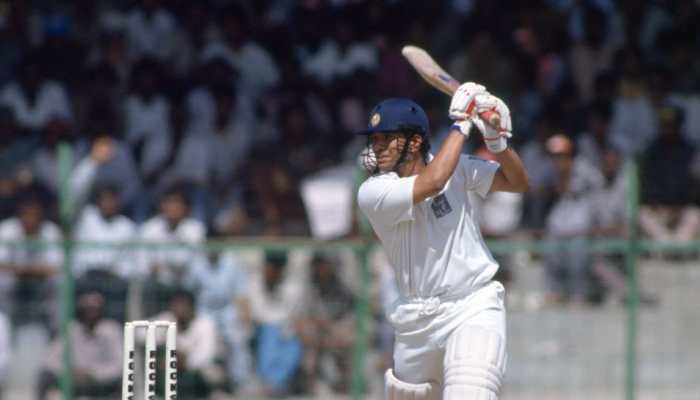BJP-JD(U) split: What next for Nitish Kumar?
Will the gamble by Nitish Kumar pay off?
Trending Photos
)
It’s over and done with. The split between the BJP and JD(U) became official exactly one week after Gujarat Chief Minister Narendra Modi was anointed as the poll panel chief for 2014 by his party. The build up to the much-hyped breakup has been in the news for the past few days with various JD(U) leaders giving enough indications of the same. However, things became crystal clear when Bihar Chief Minsiter Nitish Kumar said recently that the situation had become difficult, and recited a couplet to describe it – “Dua karte hein jeene ki, dawa dete hain marne ki”. Well, the poison that he was referring to was obvious.
The man responsible for the growing discomfort between the JD(U) and the BJP has been none other than Gujarat Chief Minister Narendra Modi. Thus, on expected lines, the seventeen-year-old alliance between the two partners ended on 16 June, 2013. However, the parting was not amicable but rather acrimonious with Nitish Kumar and Sharad Yadav lashing out at its old associate.
Nitish categorically said that he was ‘forced’ to take the decision and that the party could not compromise with their basic principles and that he was not worried about the consequences. This may sound confident and belligerent coming from a man who now has to prove his majority before the House. But that has probably been taken care of by Nitish. He has 119 MLAs (one is a dissident) in a house of 243. Half way mark is 122. So the JD(U) is short of four as of now. If the JD(U) is able to rope in the independents, then its job is done. And if it falls short of majority, then it may cut a deal with the Congress and ask it to abstain during voting.
So in all likelihood the Nitish government in Bihar may sail through, otherwise the JD(U) would not have taken the step that it did. Nitish has almost two and a half years to complete before the state goes to the polls and fresh elections is something he wouldn’t want. However, it’s one thing to run a government with a massive mandate (NDA won more than 200 seats in Bihar in 2010) and it’s another to run a government with wafer thin majority.
But what had to happen has happened. The pertinent question is what next for the Bihar Chief Minister and the state itself. If various BJP leaders are saying that Nitish ‘betrayed’ the people of Bihar as the mandate to run the government was given to the NDA and not to the JD(U) then probably they have a point. The 2010 Assembly elections no doubt revolved around the personality of Nitish Kumar and his attempt to turn around the state after fifteen years of misrule by Lalu Prasad Yadav and his men. But at the same time it cannot be denied that the BJP did exceptionally well in the polls and helped Nitish get the votes of the upper caste in his kitty.
The flip side of the coin is also that the BJP knew that any sort of elevation of Narendra Modi was bound to have repercussions and the JD(U) may walk out of the alliance. The Bihar CM has been saying for months now that the Gujarat Chief Minister was not acceptable to his party as NDA’s prime ministerial candidate. Also, Modi was not allowed in campaign in Bihar and Nitish had returned the money given by the Gujarat CM for Kosi floods. Things had become so bad in recent times that Nitish and Modi looked through each other when they were in the national capital recently for chief ministers meeting. It was a point of no return.
The fact is that even though Modi is seen as an icon of development, he is also seen as the poster boy of Hindutva and as a polarizing factor. But there is another fact – the rank and file of the BJP were growing restless and clamouring for Modi to be elevated as the face of the party. Also, Modi’s popularity has been growing amongst the middle class and the youth and the BJP realised they had to gamble with the Gujarat CM to get them votes in 2014. And a third fact is that Nitish had his own political compulsions – the 15 to 17 percent Muslim votes of Bihar.
Anyway, now that Nitish has walked out of the alliance he will have to answer some hard questions. Are the issues of communalism and secularism just a convenient tag for the JD(U)? If Modi was not acceptable to Nitish because of his so called complicity in 2002 riots, then how come LK Advani, who is considered to be responsible for the demolition of Babri Masjid, was acceptable as the PM candidate in 2009? And if Narendra Modi is communal then why Nitish, who was the railway minister then, did not walk out of the NDA in 2002 after the Gujarat riots, just as Ram Vilas Paswan did?
Is walking out of the NDA a matter of principle or is it just political opportunism on Nitish’s part? Is Nitish Kumar looking to be part of a ‘Federal Front’ and also eyeing the PM’s post? Is he looking to consolidate the votes in Bihar in his party’s favour, much like Naveen Patnaik’s BJD, which won with a bigger mandate in Odisha, after it ended alliance with the BJP. Or has Nitish Kumar become arrogant and started believing in one-man-show, guilty of the same personality traits that the JD(U) accuses Modi of?
Also, what will happen to the politics in Bihar? There can be no denying the fact that Nitish has been a beacon of hope for Bihar which was said to be in dark ages and he has taken the state on the path of development and growth. But, though it seems unlikely at the moment, if snapping of ties between the two allies helps in the resurgence of Lalu Prasad Yadav in any way and if the RJD is able to cobble up enough votes to get back to power, then Nitish will be the biggest loser and it will definitely not augur well for the state? Maybe Nitish is hoping that a chunk of upper caste votes who are averse to Lalu, will go to the JD(U).
It is clear that the 2014 Lok Sabha poll is going to be a litmus test for Nitish Kumar and his men. If his party does well then the gamble taken by him will have paid off but if it doesn’t then he may as well have committed political hara-kiri by breaking up with the BJP.
Post Script: In 1996 Atal Bihari Vajpayee became the first BJP prime minister but only for 13 days as he could not muster enough votes to prove his majority in Parliament. But in 1998 he ruled for 13 months and then again from 1999 to 2004 after the same parties who had considered BJP as untouchable in 1996 joined the NDA on the plank of anti-Congress-ism. As they say - in politics there is no permanent allies and no permanent enemies – so who knows if things don’t work out the way Nitish has planned it will, JD(U) might as well come back to NDA’s fold and Narendra Modi may not be so untouchable after all.
Stay informed on all the latest news, real-time breaking news updates, and follow all the important headlines in india news and world News on Zee News.
Advertisement
Live Tv
Advertisement







)
)
)
)
)
)
)
)
)
)
